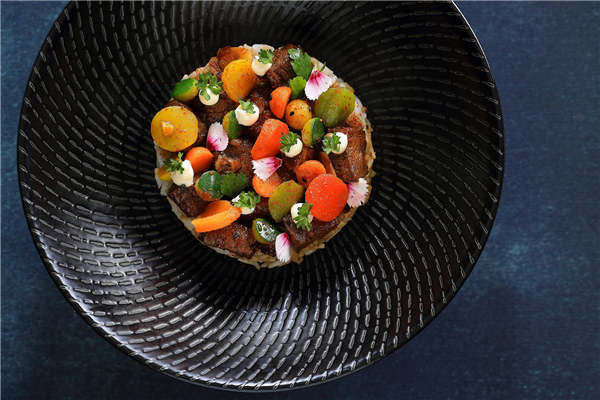 |
|
Seafood is the traditional heart of poke, but chef Sandeep Bhagwat isn't afraid to let steak get into the mix. |
"All you need to make poke is a really sharp knife to cut up your fish and vegetables," writes Cheng in The Poke Cookbook.
"When I see poke trending now in the continental US," she says, "I think, 'What took so long?' Hawaiians have long known the pleasures of seasoned raw seafood. Being surrounded by ocean probably has something to do with it. Way back, long before Captain Cook landed in the islands in the 18th century, native Hawaiians would prepare i'a maka (raw fish), chopping up reef fish (the striped and brightly colored fish you see when snorkeling in Hawaii), bones and all. They would season it with sea salt dried in the sun, limu (seaweed), and 'inamona (roasted and crushed kukui nut, or candlenut). But it wasn't until the 1970s that the dish really gained popularity and the word 'poke', which simply means 'to slice' or 'to cut crosswise into pieces, came to be associated with the preparation we know now."
While poke is best-known today as cubed raw ahi tuna tossed with soy sauce, sesame oil, raw onions and red chilies, she says seafood counters in Hawaii offer lots of variety.
"Poke doesn't even have to be raw," she adds. "Legendary poke chef Sam Choy makes a fried poke, transforming yesterday's poke into today's fought-over leftovers."
If you go
China-wide: Element Fresh
Beijing: Home Grounds, Village Cafe (in Opposite House), Opus Lounge summer menu (in Four Seasons Beijing)
Guangzhou: Morton's Grille
Hong Kong: Aloha, The Poke Co, Pokeworld, Pololi
Shanghai: Little Catch (two stores) and Alan Wong's (in the Portman Ritz-Carlton)